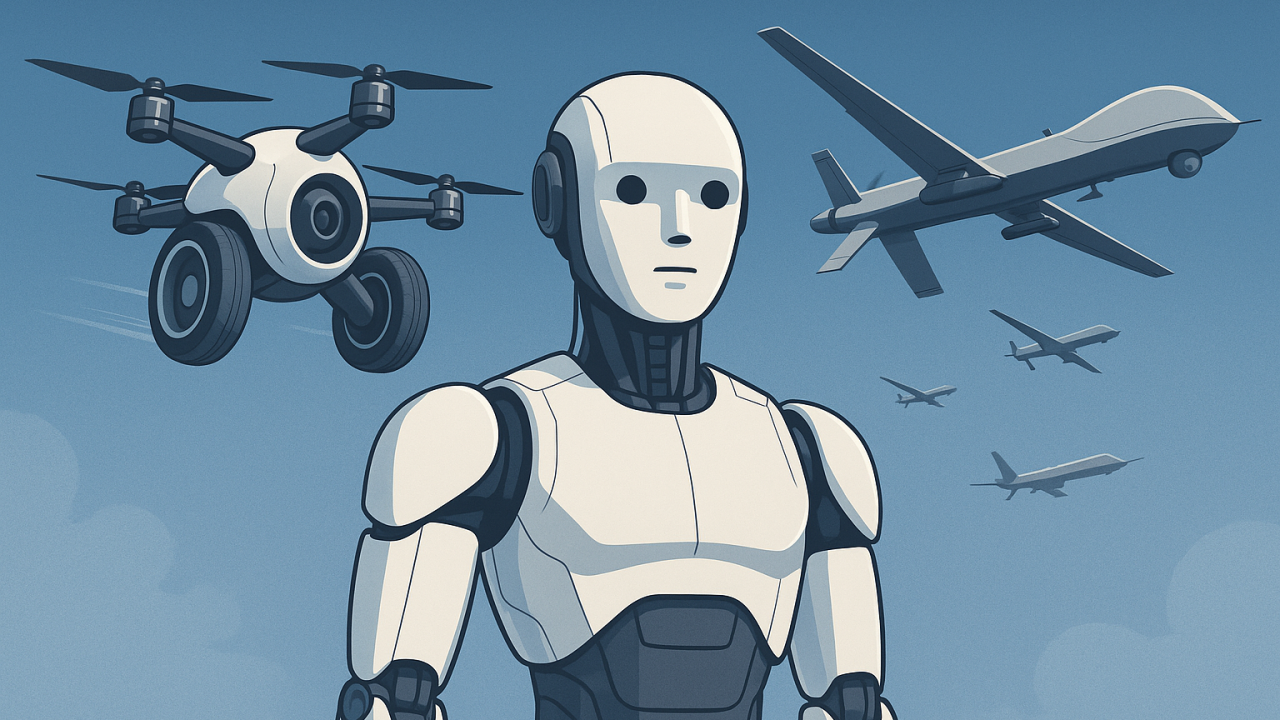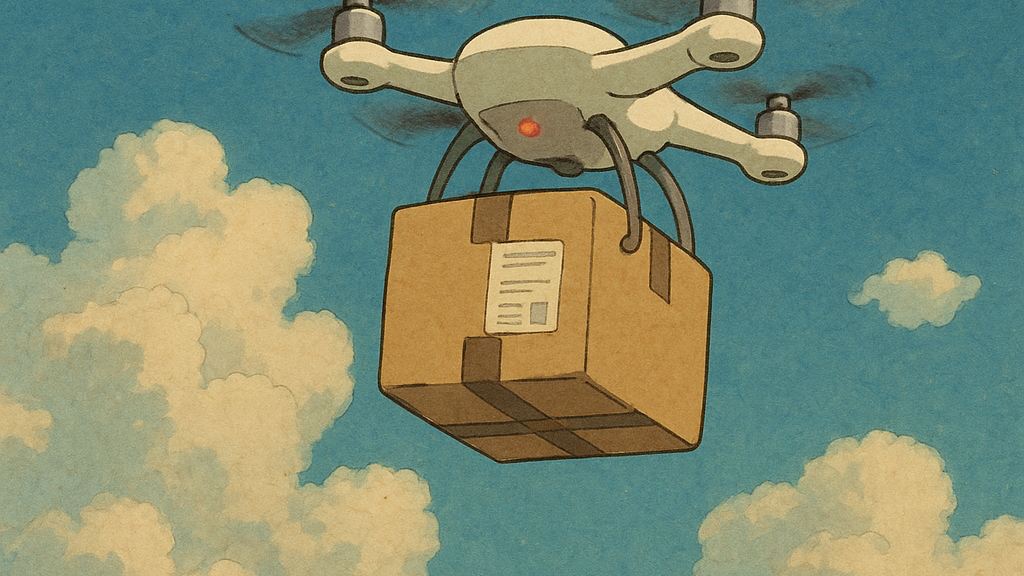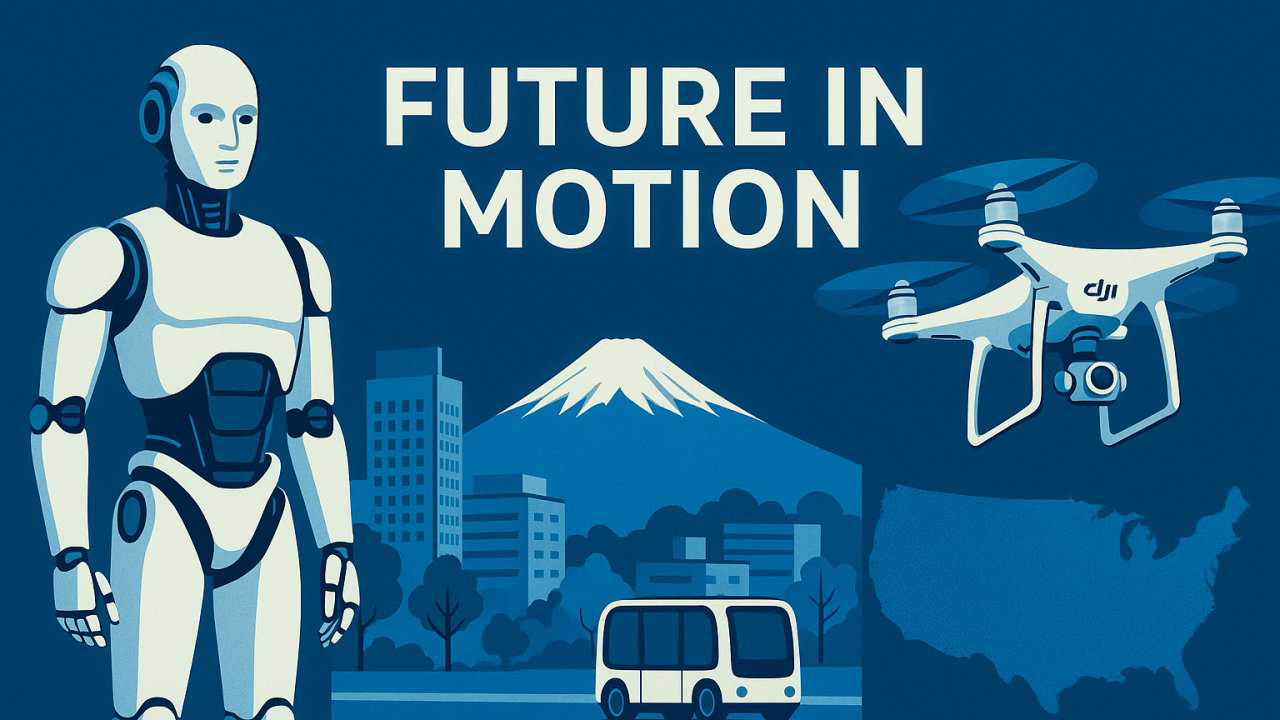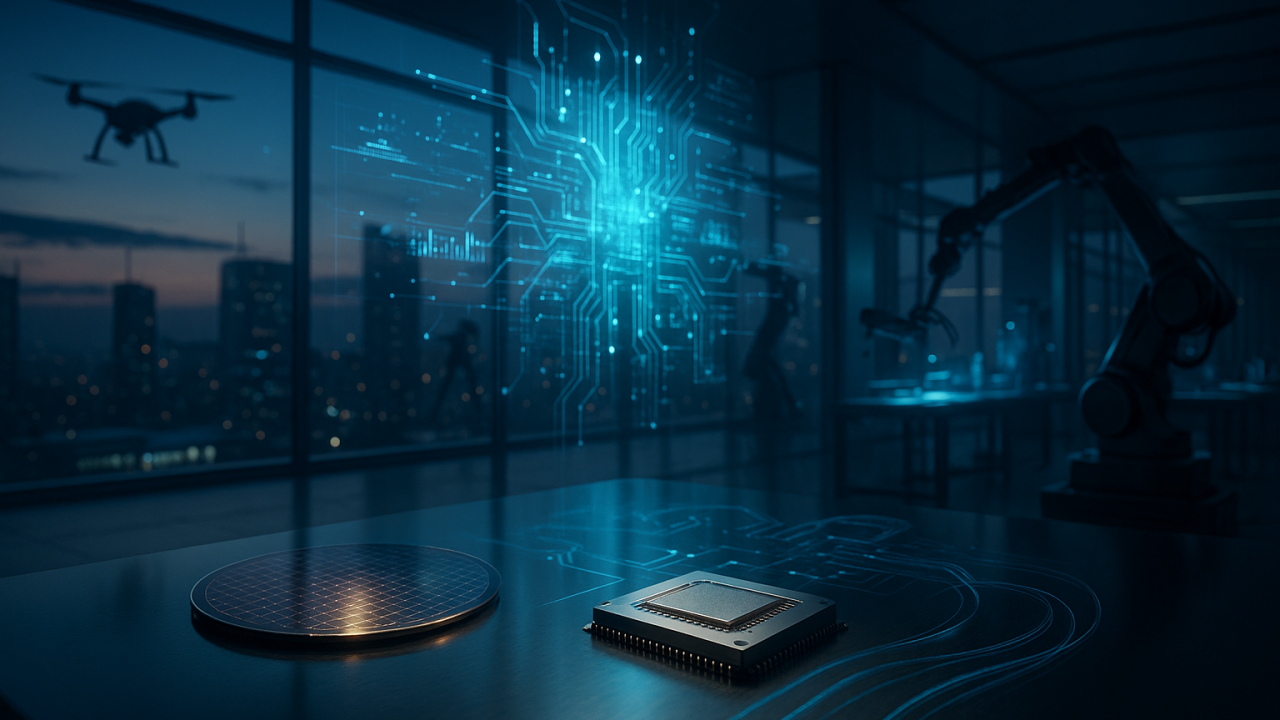Flying Food, Warehouse Workhorses, and Humanoids on the Job: This Week’s Robotics Revolution
TL;DR This week in robotics: AEON, a full-stack AI humanoid trained in simulation, is stepping into the real world; DoorDash's drones are now...

From morphing drones and open-source humanoids to scalable military swarms, this week’s breakthroughs show that robots are becoming more adaptable, affordable, and accessible than ever.
Major Takeaway: More versatile movement means more real-world applications. Atmo’s dual-mode design points to a future where robots are no longer limited by terrain or task.
Summary: A team from the University of Tokyo and Swiss robotics company Verity have developed Atmo, a compact robot that merges the functionality of a car and a drone. It uses four wheel-arms that can rotate to become quadcopter rotors, allowing it to drive, take off vertically, and fly through the air. More impressively, it can dynamically reconfigure its arm positions mid-flight—optimizing for speed, agility, and stability.
Atmo is built with a lightweight carbon fiber frame and 3D-printed parts, clocking in at just 1.6 kg. It navigates using an onboard camera and processor, making it fully autonomous. This type of robotic mobility isn't just a neat party trick—it's designed for tight, obstacle-filled environments that neither traditional ground bots nor standard drones can easily traverse.
Why it matters: Robots are becoming significantly more versatile in how they move, which dramatically expands where they can operate—and what they can do. Morphing mobility allows a single robot to serve in varied environments: flying over rubble, driving under low-hanging obstacles, or weaving through complex indoor spaces. The more adaptive their movement, the broader their utility across logistics, disaster response, infrastructure inspection, and beyond.
Major Takeaway: Hugging Face is turning humanoid robots into open platforms—bringing the power of collaborative development to embodied AI.
Summary: Hugging Face, the AI company behind popular open-source language models, is entering the robotics space with two humanoids: Leonardo and Shelly. Instead of building the hardware, they’ve partnered with 1X and AgileX to focus on the software layer—using natural language processing and reinforcement learning to make these bots smarter over time. The aim? A developer ecosystem for robots, much like Android for phones.
Why it matters: By open-sourcing the brains of humanoid robots, Hugging Face could dramatically accelerate innovation and accessibility in the space. It shifts robotics from a lab-bound industry to one shaped by global contributors.
Major Takeaway: Drones are the future of warfare—more adaptable, scalable, and cost-effective than traditional military hardware.
Summary: Through its Replicator initiative, the U.S. military is moving away from heavy tanks and toward swarms of cheap, autonomous drones. These unmanned systems can be deployed quickly, modified easily, and replaced without breaking the bank. From surveillance to electronic warfare and strike capabilities, drones are proving to be more tactically flexible than legacy equipment.
Why it matters: This marks a major doctrinal shift in military strategy. Instead of a few expensive machines, the future battlefield will be dominated by fleets of intelligent, disposable drones—offering a tech-first edge in both cost and capability.
Founded in 2018, Lucid Bots is an AI robotics company that is committed to uplifting humanity by building the world's most productive and responsible robots that can do dangerous and demanding tasks. Headquartered in Charlotte, the company engineers, manufactures, and supports its products domestically, which include the Sherpa, a cleaning drone, and the Lavo Bot, a pressure-washing robot. Lucid Bots' products are elevating safety and efficiency for a growing number of customers around the world. Lucid is a Y Combinator-backed company, with investments from Cubit Capital, Idea Fund Partners, Danu Ventures, and others. Lucid Bots was recently recognized as the fastest growing robotics manufacturer in the United States.

TL;DR This week in robotics: AEON, a full-stack AI humanoid trained in simulation, is stepping into the real world; DoorDash's drones are now...

TL;DR Chaebol-backed Korea is racing to perfect humanoids, Toyota is turning Mt. Fuji into a living smart-city lab, and new U.S. rules are clearing...

TL;DR Robots are moving from R&D labs to the real world. Dongfeng is using humanoids on its car assembly line. Nvidia is all-in on humanoids and AVs...